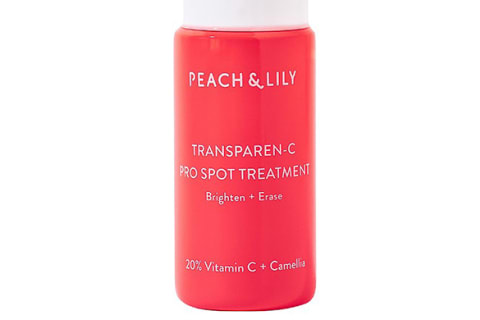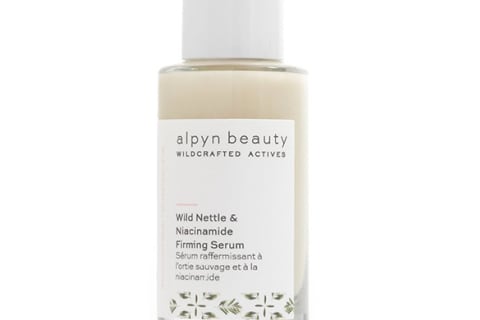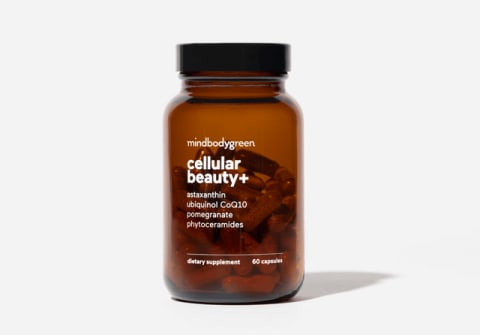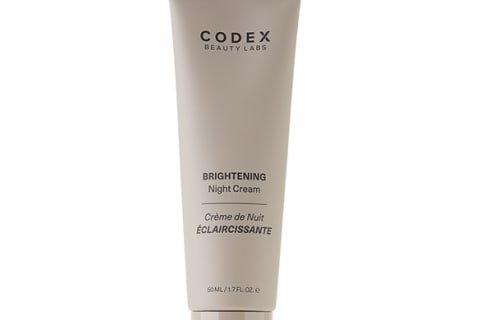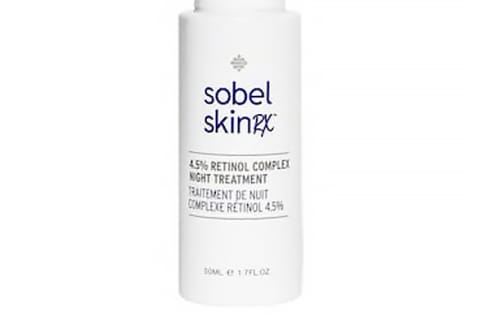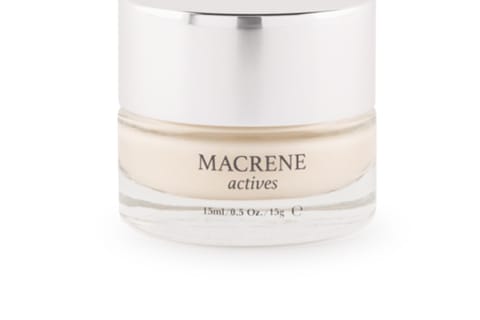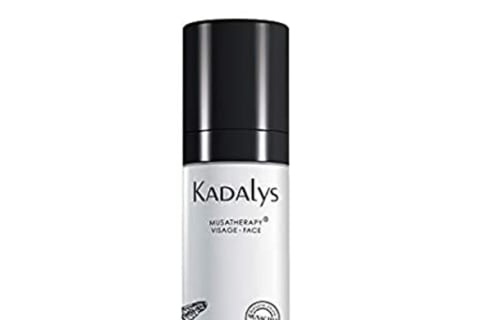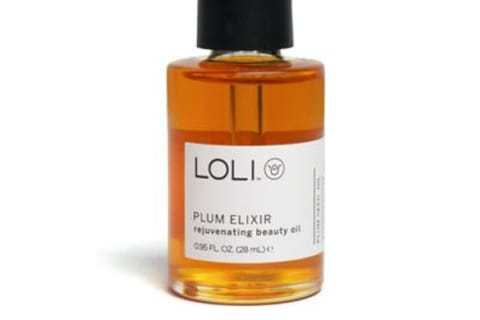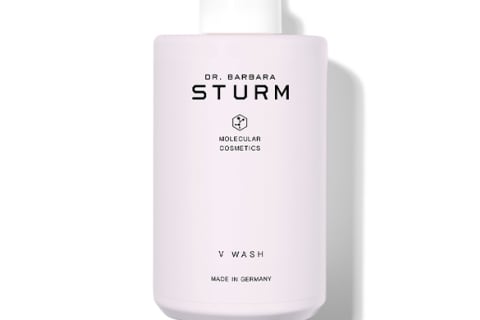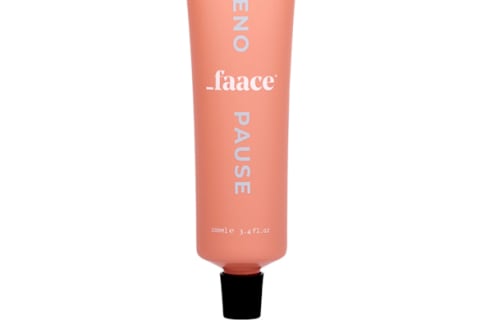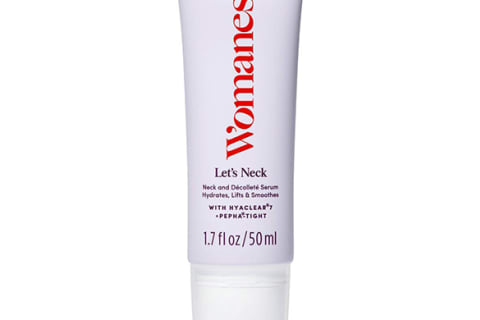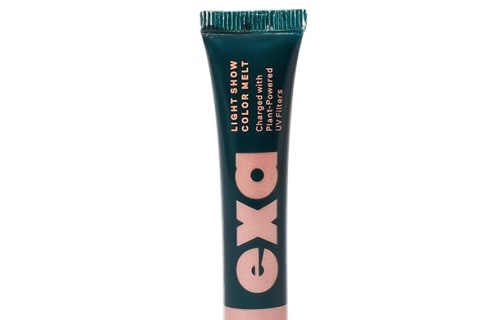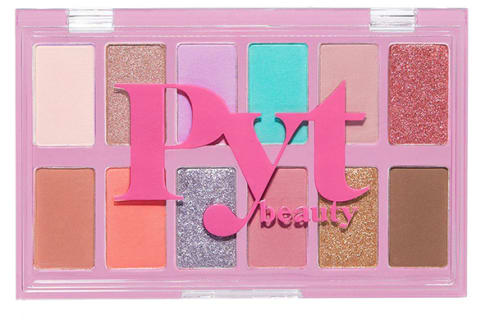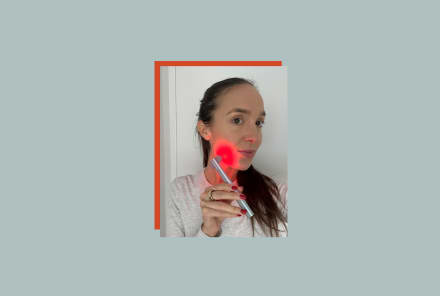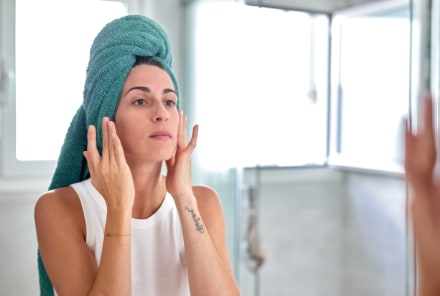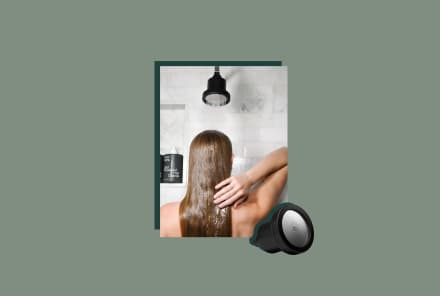Advertisement
Clean & Natural Beauty Trends: What's Big In Beauty In 2021

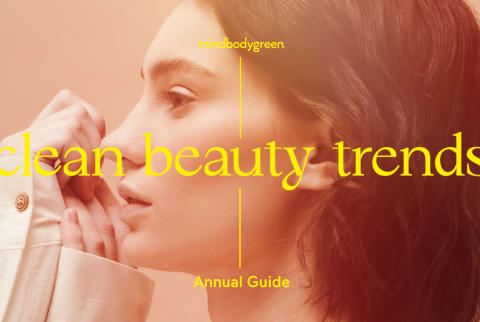
Beauty trends are always a product of their times. Since beauty is one means by which people express themselves and help contextualize the world around them, what becomes "popular" will, on some level, reflect this. And what times we live in now, no?
As we tepidly enter a new era, what I'm seeing in the zeitgeist certainly mirrors many of the shifts we've seen over the past year or so. When the great outdoors became more important to our daily lives than ever before in recent memory—so many of us started using nature as a means of inspiration and awe. And this was not just as a way to calm and sustain ourselves but as a way to have fun again. Or we decided that instead of constantly needing to exfoliate our skin in the search for brighter complexions underneath, we'd nurture the barrier instead. And given we're all so much more in tune with the science behind it all, we've moved away from marketing-speak and empty promises toward expecting data-driven results in our search for product efficacy.
But of course, we are still met with some of the same hardships and realities that have plagued us in the past. Certainly one of the most pressing questions is how can we create a more sustainable world around us? And while mindbodygreen has been talking about a circular economy for years now in regards to packaging, we are starting to see upcycling gain broader traction in the formulas themselves.
And in a time when longevity and healthy aging seem to be on all our minds, we've seen a shift away from youth-obsessed beauty coverage and brands. Yes, it's still there in spades, but there are also more resources and brands making room for people of all ages—notably those experiencing menopause.
This is all to say, what I'm seeing in the beauty space isn't new or surprising. But that's actually what makes trends so interesting to evaluate and dissect: They're less about what's novel and next—and more about who we want to be. —Alexandra Engler
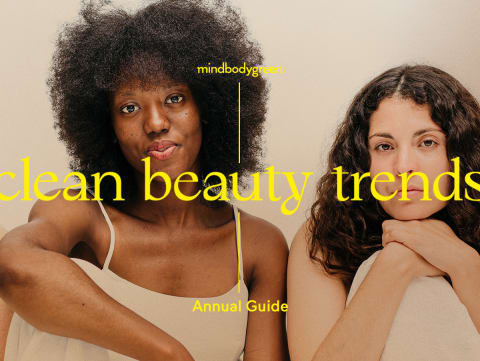
In comes the rise of repair — for our physical health, for our mental health, and for our skin.
In the past year and a half, you'd be hard-pressed to find anyone who hasn't tweaked their beauty routine in some form or fashion. Some eschewed makeup (from the nose down, at least); others pared back their routines to the very basics; and, it turns out, a significant number of beauty fans tucked away their acid-soaked peels and masks in favor of gentler formulas—ones with the sole purpose of wrapping the skin in a safety blanket.
As a recent consumer trends report by data provider Spate found, words like "purifying" and "illuminating" are losing their marketing power, while terms like "renewing," "reparative," and "healing" are rising in rank. No longer do we look to strip our skin with abandon or revel in the sharp tingle only a potent peel can give: We're slowing down, treating our skin with kindness, and focusing on repair. It seems brands are taking note, with a smattering of new offerings meant for skin recovery and long-term health.
And after the year we've had, an emphasis on recovery—for our physical health, for our mental health, and for our skin—feels like a huge sigh of relief.
In terms of physical health, we don't need to tell you that immune resilience has become a top-shelf topic of late, but let's not forget about immunity in the context of skin care as well: "There's this very intricate and complex crosstalk between the microbiome and the immune system in our skin," notes mindbodygreen Collective member and board-certified dermatologist Whitney Bowe, M.D. "The skin conditions that we see—including chronic skin conditions, like acne, rosacea, psoriasis, eczema, as well as more 'cosmetic' concerns, like signs of aging, loss of elasticity, development of fine lines, dark spots, and uneven tone—are very intimately related to our immune system and the levels of inflammation in our skin."
Translation? Your skin microbiome and immune system are intimately connected; so as we see an increased focus on immune resilience and daily repair, it makes sense we would translate the same notion to our complexions with comforting, restorative formulas. Take Glow Recipe, which launched their new Avocado Ceramide Recovery Serum back in March: "[It] not only provides immediate relief but also boosts skin immunity to help protect against irritants over time for stronger, healthier skin," says Sarah Lee, Glow Recipe co-founder and co-CEO.
And just as you want a balanced, well-educated immune system at large (rather than one that's too sleepy or too alert), you want to strike the same equilibrium with your skin. You don't want your skin on overdrive, targeting harmless molecules as "threats" and attacking them, so you don't want to constantly shed dead skin cells—which can lead to irritation, loss of moisture, and a compromised barrier.
Rather, give the skin a rest once in a while and opt for gentler actives, like the ones in Alpyn Beauty's new Wild Nettle Firming Serum: a formula the brand dubs a "silk robe for the skin" with niacinamide, wild nettle, and rambutan. "We wanted to get back to basics with Wild Nettle so that you can apply something that soothes and treats this overworked organ," says Kendra Kolb Butler, founder of Alpyn Beauty.
On the topic of feeling overburdened, we'd be remiss not to mention how the past 15 months have been riddled with stress and the influence that has on this aspect of recovery. As we know, stress can show up on the skin in myriad ways—acne, irritation, dryness, dullness, you name it. "[During COVID], people were starting to see physical manifestations of their stress levels in a way I think they hadn't really appreciated before," notes Bowe.
For many, stepping up to the sink became a valuable time to pump the brakes, connect with their skin, and decompress. Rather than exfoliating the stress away, maybe you adopted a skin gratitude practice or dabbled in a tension-relieving facial massage. No matter the ritual—perhaps it's slower-paced and gentle. "When we are willing to sit with our feelings and really feel the sadness, grief, or discomfort that is underneath and accept ourselves anyway, we're able to approach ourselves and our skin with compassion instead of judgment," board-certified dermatologist Keira Barr, M.D., once shared with mbg. In most cases, compassion looks like pampering the skin with ingredients like ceramides and colloidal oat, rather than, say, a heavy-duty peel.
Of course, the concept of "glowing skin" is still very much in demand. Luminous, radiant skin didn't just fly out the window—we simply flock toward gentle, soothing brighteners to get there, like niacinamide, PHAs, and tranexamic acid. Peach & Lily, for example, uses the latter along with vitamin C and kojic acid in their new Transparen-C Pro Spot Treatment to gently resurface the skin and help fade hyperpigmentation. Alpyn Beauty's Wild Nettle Serum, as mentioned, uses niacinamide to tend to discoloration and fine lines while simultaneously supporting the skin barrier.
The tried-and-true exfoliators aren't going anywhere, either (AHAs, BHAs, and the like): "I just think that we're going to be smarter about how we're using them and how we're incorporating them into our skin care routines," says Bowe. Meaning, even if you do fold in those stronger actives, it's important to keep recovery in the back of your mind. Like immunity, skin healing isn't a one-off issue whenever you notice a specific concern; coddling your skin may be more important than ever, but prioritizing repair is a trend that's here to stay.
The best in clean beauty:
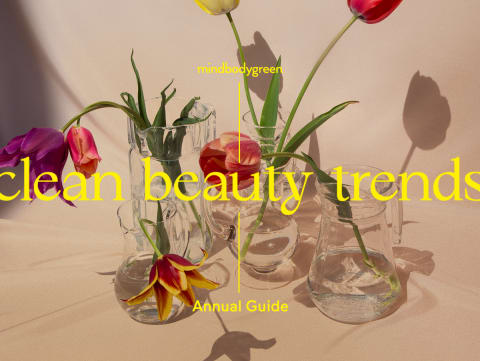
The market makes the case for data-driven skin care, supplements & naturals.
In the last decade, a few shifts have fundamentally changed the beauty industry for good. The first is that the market simply exploded with brands big and small, indie to mass, drug and department store to direct-to-consumer, and playful to prestige. There is a massive variety of products for consumers to choose from—and because of that, users are allowed to be more discerning with their selection. No longer do people need to settle for whatever they can find at the store nearest them.
Another important shift is that beauty fans are so much more educated, thanks to the ease of social media, the accessibility of top experts, and the instant Google-ability of research and studies. People are better informing themselves before they make choices about what they put on and in their bodies. And because of this, consumers have become much more vocal about wanting to see ingredients, results, and info to back up any claims made by the brand.
In a recent market report published by Spate, they noted that "consumers continue to show interest in understanding what ingredients will get them the results they want. While searchers for typical anti-aging claims have decreased, searchers for ingredients that fulfill those claims are on the rise." In fact, searchers for common skin care ingredients—such as hyaluronic acid, lactic acid, retinol, and so on—are up 44%, they note.
This shift is most evident in the products we see on the market. Ingredients once deemed too "science-y" for the average beauty fan are now commonplace in marketing. Serums that might once be called "Clarifying Elixir," "Silky Serum," and "Cushion Face Creams" are now simply named after the active that is doing the brightening, hydrating, clarifying, and so on. Exfoliators now highlight what AHA or BHA is doing the work—along with the exact percentage of concentration.
More and more brands are telling users exactly what's in their formulas, why it's there, and what they can expect from it. Something that would be unheard of a decade or two ago.
"It used to be that a brand could make a vitamin C serum and only put a drop of vitamin C in it because no one was holding them accountable," says cosmetic chemist Krupa Koestline. "Now when you go on social media, consumers are asking questions about what type of vitamin C is it? At what percentage is it formulated? What is the preservative system to ensure that it remains stable? That never used to happen."
And as we see consumers hungry for transparent and effective products, companies are taking note. One such example is Codex Beauty Lab, a company that rebranded last year amid the pandemic. And in their rebrand, they moved away from marketing themselves as a natural and clean company—and more toward skin health in general.
"We are, at our core, a biotech company. But when I first started, we were told that it wouldn't work—we were told that consumers weren't going to get it and understand what we were doing," says scientist and brand founder Barbara Paldus, Ph.D. "But this last year, I decided I wanted to go back to what we always were—we're not a beauty company. We couldn't care less about beauty because you can't measure beauty. But you can measure health and skin health—so that's what we care about. We are proud to be a scientific company."
So in her rebrand, she decided to lay it all out there: On their packaging they now include what they call "efficacy panels," which show how that exact formula worked in clinical trials. "The food industry has educated the consumer in a way that they can glance at a nutrition panel and understand what they are getting out of the food. The consumer is empowered and understands what they are putting in their bodies, even if they don't know they are," she says. "And no, the consumer doesn't need to be experts on ingredient lists—or know what 40 scientific names are. But they should be informed about product performance and safety testing."
We're seeing this in the beauty supplement space, too. "As a Ph.D. scientist and R.D. who specializes in nutritional product development, I have some pet peeves when it comes to beauty supplements. First is fairy dusting. This is when products intentionally include less-than-efficacious doses of beauty-relevant ingredients just so they get some 'airtime' on the product label," says Ashley Jordan Ferira, Ph.D., RDN, director of scientific affairs at mindbodygreen. "When I approach a premium product formula for a beauty supplement, it's about ingredients rooted in clinical science included at effective doses that support a targeted area of wellness in an impactful, clean, and plant-centric way."*
Take mindbodygreen's cellular beauty+; it features four science-backed cosmeceutical ingredients: astaxanthin, phytoceramides, ubiquinol CoQ10, and whole fruit pomegranate extract.* These edited, high-quality ingredients have strong clinical data to back their efficacy—and this formula uses them in doses that are clinically shown to enhance skin elasticity, smooth wrinkles, and support the barrier.* For example, Ceramosides® (the specific brand in this supplement) have been clinically shown to reduce wrinkles after only 15 days, with even greater benefits after eight weeks.* Pomegranate extract has been clinically shown to enhance antioxidant responses and skin photoprotection from UV damage after one to four weeks.* Astaxanthin has been clinically shown to reduce fine lines and age spots after six to 16 weeks.* CoQ10 has been clinically shown to improve skin elasticity and smoothness and reduce wrinkles and fine lines after 12 weeks.* Those are all pretty impressive data points.
However, as Koestline notes—it's important that brands and formulators be mindful of this trend's potential shortcomings. For example, there is a movement in the market right now that rewards products with a higher percentage of actives in the formulas—regardless of whether this is better or worse for the consumer. You've likely seen this in serums or treatments that label themselves as having a certain percentage of actives such as vitamin C, AHAs, or niacinamide. This is preying on the fact consumers often equate higher potency with results efficacy, when that's not actually how smart and responsible product formulation works.
As Koestline says, these percentages can even border on ranges that could hurt or sensitize the skin. "While transparency is always a good thing—this trend does rely on the consumer knowing how to use these products responsibly," she says. "Because the higher percentage of active ingredients isn't always good for your skin."
She notes that the brands are capitalizing on the consumers' inherent want for effective, potent products without considering potential repercussions or problematic user behavior. "I've heard horror stories of people using potent AHA treatments or vitamin C serums because the consumer didn't know how to use them appropriately and went overboard," she says. "It takes the responsibility away from the brand and puts it on the consumer to be informed."
Ultimately, though, we believe that this change is a good thing: Being honest and upfront about products, efficacy, and research can only be viewed as a step in the right direction for consumers' purchasing power. People have a right to know what they are putting on their bodies—and if it will do what it says once it's applied.
—Alexandra Engler
The best in clean beauty:
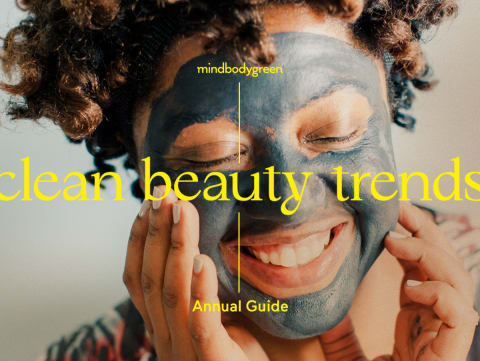
In a world of waste, we welcome upcycled ingredients.
We're likely all familiar with the concept of "farm to face"—or, when brands use ingredients grown and harvested in more localized farms—now it's "food waste to face." In the beauty industry's growing effort to create a more sustainable world, one of the coolest areas of innovation is perhaps upcycling otherwise discarded ingredients, extracting their skin-friendly actives, and providing them to the consumer in sensorial appealing products.
Upcycling writ large has become a popular way to reduce waste, from packaging to fabrics and fashion to home goods. The idea itself is simple: Instead of discarding used goods or byproducts, the items or ingredients are given a second life. And in the case of beauty products, that means ingredients extracted from food waste are formulated into the creams and serums you apply to your skin.
Food waste is one of the largest issues facing sustainability today. The last available data suggests that about one-third of all global food is wasted or discarded per year—in America it is 40% of all food. But it's not only the waste itself that's the problem. There's the emission footprint that goes along with it: Most wasted food ends up in landfills, where it generates methane, a greenhouse gas that is up to 86 times more powerful than carbon dioxide.
Now, on some level upcycled ingredients have always been around in the beauty space, especially when you look at small-batch brands or holistic-minded companies. "Some of this is just marketing, as 'upcycling' ingredients has been around for a while in the beauty space," says clean cosmetic chemist Krupa Koestline. "From a logistical standpoint, for businesses to be profitable, of course they will be upcycling. Of course there are things people do to make use of everything possible."
A classic example is the making of essential oils, says Koestline. Essential oils are highly concentrated botanical extracts—and to get that high concentration, you need a lot of said plants. "When you make essential oils, you usually have plant material wastage," she says. "So instead of just getting rid of this, you use the wastage to create hydrosols, like rose or lavender water. There's incentive in making sure you use all of the plant; otherwise, you would have thrown it away."
However, what makes our modern surge notable is the lengths at which beauty brands go to secure discarded ingredients—as well as the scale to which it's happening. Take, for example, UpCircle Beauty. This London-based skin care brand was co-founded by Anna Brightman. The core of the brand is centered on this exact concept—or what they call "byproduct beauty."
"This circular movement is growing massively. The world has finite resources, and we're using them up quickly. So we can't keep on viewing consumption as a linear approach—we need to move to circular," says Brightman.
Their story begins when Brightman discovered that more than 500,000 tons of coffee grounds are sent to the landfill every year, in London alone. And, well, coffee and caffeine just so happen to be very popular items in skin care products, making their way into scrubs, eye creams, and various other firming topicals. (And using the grounds wasn't just an eco-friendly option—it's a skin-friendly one. "The level of antioxidants is actually higher in brewed coffee," she says.)
Of course, turning discarded coffee grounds into a profitable skin care business was no small feat. "The largest challenge in this space is scalability and supply chain," she says. "It's important you intercept these byproducts before they make it to the landfill, so you need to work with the various industries so you can figure out the logistics." They have since gone on to include byproduct ingredients from the argan, tea, juice, date, olive, and wood industries.
They're not the only ones. There's Kadalys, a beauty brand that uses banana bioactives. According to the brand, some 22 million tons of bananas are thrown away simply because they are "ugly" or misshapen, every year. (Food waste isn't just about the stuff you may not finish or toss when it goes bad—it's an industrywide problem as suppliers won't sell foods that aren't aesthetically pleasing, even if they are otherwise fine.) This brand, founded by Shirley Billot, extracts their actives from these otherwise ignored bananas. To great effect, we may add—bananas are chock-full of phytosterols, polyphenols, vitamin E, and omega-6s and 9s. And the formulas are ECOcert and COSMO certified.
LOLI Beauty is a classic sustainable brand that has used upcycled ingredients from fair trade farms for quite some time. Take, for example, their cult-favorite Plum Elixir, which is sustainably upcycled from the kernel of the French Ente plum.
And ultimately, as Brightman tells me, how we view commodities is part of the problem. "I encourage people to reframe this conversation about things that are 'salvaged,' 'rescued,' or 're-loved.' We don't even like to use the word 'waste' because ultimately, these things aren't waste," she says. "They're part of the planet, and just because they've been used before doesn't mean they're trash."
—Alexandra Engler
The best in clean beauty:
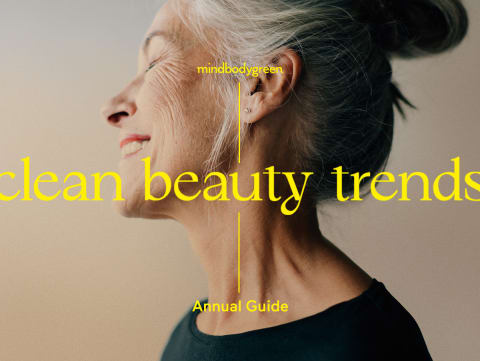
Menopause skin care is more sophisticated and—dare we say?—fun.
Skin changes during menopause are no longer hush-hush (it's a natural part of life! Let's talk about it!), but the conversation tends to read quite technical. Given the delicate, complex relationship between sex hormones and the skin, this makes sense: Once hormones like estrogen, progesterone, and testosterone start to diminish, Barr tells mbg, it can affect many key skin functions, including collagen production, pH, oil activity, and hydration.
As such, many menopause skin care products reflect this sort of science speak, with clinical-looking formulas that, oftentimes, feel a bit out of touch. But no more: Menopause-focused skin care is taking on a new narrative, one with a modern and (dare we say?) "cool girl" twist. It's something to behold—and it's about time.
According to a 2020 report by venture capital firm Female Founders Fund, an estimated 1.1 billion women throughout the world will be postmenopausal by 2025. And these women have tremendous spending power—Forbes previously called women over 50 "the healthiest, wealthiest, and most active generation in history," with over $15 trillion in purchasing power—yet the age bracket has remained historically untapped; older research from the AARP found that only 10% of marketing dollars are targeted toward the 50-plus crowd.
As a result, elevated products advertised toward millennials and Gen Z'ers (clad in millennial pink and Gen-Z green packaging, of course) practically flood the market, and then...the fun drops off, the language skewing serious as the target age climbs.
"These women deserve better," says Sally Mueller, co-founder and CEO of Womaness, a modern menopause beauty brand that launched in March 2021. "They're willing to invest in their own self-care more than any generations before, so why not give them the best products possible?" That very question became the impetus of the brand—a slew of targeted skin care and feminine health products dressed in sleek, lavender packaging.
Jasmine Wicks-Stephens, founder of U.K.-based skin care brand Faace, seconds the notion: "What would traditionally appeal to an older consumer is outdated," she says. "Why shouldn't you have something nice-looking to help you deal with menopause?" That's why the brand added a Menopause Faace Treatment Mask to their brightly colored product line this year—a cushiony formula brimming with antioxidants from carrot seed and pomegranate oil.
Even long-established brands are hopping on the bandwagon with hormone-specific lineups: Dr. Barbara Sturm, known for decadent formulas fit for sensitive skin, recently launched a V Collection for the intimate feminine area, with a mission to educate women on how vulva health varies with age, menstrual cycle, pregnancy, and, yes, menopause.
Now, women of menopausal age have a bundle of skin care offerings that not only fit their needs (dryness, irritation, dehydration, et al.) but also speak to their style—be it vibrant and spiffy, elegant and chic. "We wanted to make [the packaging] Instagrammable," Mueller adds. "Women of this age are into social media, and they want it to look pretty on their vanity. Instead of writing her off and thinking she doesn't care or she's not socially savvy, that's wrong—she is all of those things, and aesthetics do matter to her."
Although, this notion of sitting pretty on the shelf goes deeper than an Instagram grid: Equipped with products they're proud to show off, women may have an easier time feeling proud of this phase of life. "[Menopause skin care products] aren't something we want her to be embarrassed about or hide away," says Michelle Jacobs, Womaness co-founder and COO. When these polished, stylish formulas take center stage on your vanity, it can make you feel polished and stylish when you use them, which can help reframe the narrative about menopause and aging writ large.
After all, menopause is a milestone, a celebration of life: "Rather than fight the transition or shroud it in shame, we should embrace the change as gracefully and healthfully as we can," says Barr. With that, we should treat these women with the sophisticated skin care products they deserve.
—Jamie Schneider
The best in clean beauty:
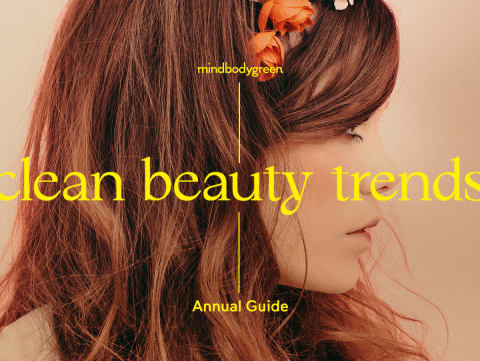
Nature is your best accessory.
Florals are back—well if they ever left. It's an all-natural accessory that has stood the test of time. Think Minnie Ripperton's crown of baby's breath. Elizabeth Taylor's '60s mod wedding with a bouquet of hyacinths intertwined with her famously raven strands. Beyoncé's instantly iconic Vogue cover, in which she wore a massive arrangement of brightly colored florals.
The catalyst of nature-inspired adornment likely comes as no surprise: Over the last year, the great outdoors served as our refuge and oasis—a safe place to hang out with loved ones, de-stress from the pandemic-induced anxiety, and sustain us during some of the worst of times. As we start to venture out into a more "normal" life, we haven't forgotten our collective appreciation for nature and all that it gave us last year.
Beauty certainly hasn't.
If you head over to TikTok, flower-spiked bubble braids went mega-viral. In one video, hairstylist Matt Newman puts his long silky brunette locks in bubble pigtails, with a dandelion at each hair tie. "Dandelions are nature's hair accessory," says Newman in a video tutorial. This highlights that really any botanical adornment will work: You don't need to opt for centerpiece-ready blooms—even options that are commonly referred to as weeds will do.
We also love the trend because it's simple, accessible, and low-budget. We so often talk about how this past year encouraged beauty fans to get back to basics with their routines, habits, and even looks: There's nothing more so than plucking a garden-grown flower and sticking it in your strands.
But the trend goes elsewhere too: your makeup! Peek at social media and you'll see playful makeup looks inspired by nature—like floral accents, cosmic adornments, and pretty pastel hues.
Clean beauty expert and celebrity makeup artist Katey Denno said similarly, "Say you have a pimple, instead of covering it up with concealer, draw a little flower around it," she says. "It's a way to just embrace yourself and your skin for the fun of it. Use makeup as an accent instead of a mask."
Sure, this is also a nod to the acne positivity movement, but it's also just a way to get playful—a reminder that beauty doesn't always need to be so serious.
In fact, I'd argue that one of the ways beauty is at its best is when it's absolutely wild.
—Alexandra Engler
Shop These Products:
Watch Next
Enjoy some of our favorite clips from classes
Enjoy some of our favorite clips from classes
What Is Meditation?
Mindfulness/Spirituality | Light Watkins
Box Breathing
Mindfulness/Spirituality | Gwen Dittmar
What Breathwork Can Address
Mindfulness/Spirituality | Gwen Dittmar
The 8 Limbs of Yoga - What is Asana?
Yoga | Caley Alyssa
Two Standing Postures to Open Up Tight Hips
Yoga | Caley Alyssa
How Plants Can Optimize Athletic Performance
Nutrition | Rich Roll
What to Eat Before a Workout
Nutrition | Rich Roll
How Ayurveda Helps Us Navigate Modern Life
Nutrition | Sahara Rose
Messages About Love & Relationships
Love & Relationships | Esther Perel
Love Languages
Love & Relationships | Esther Perel

